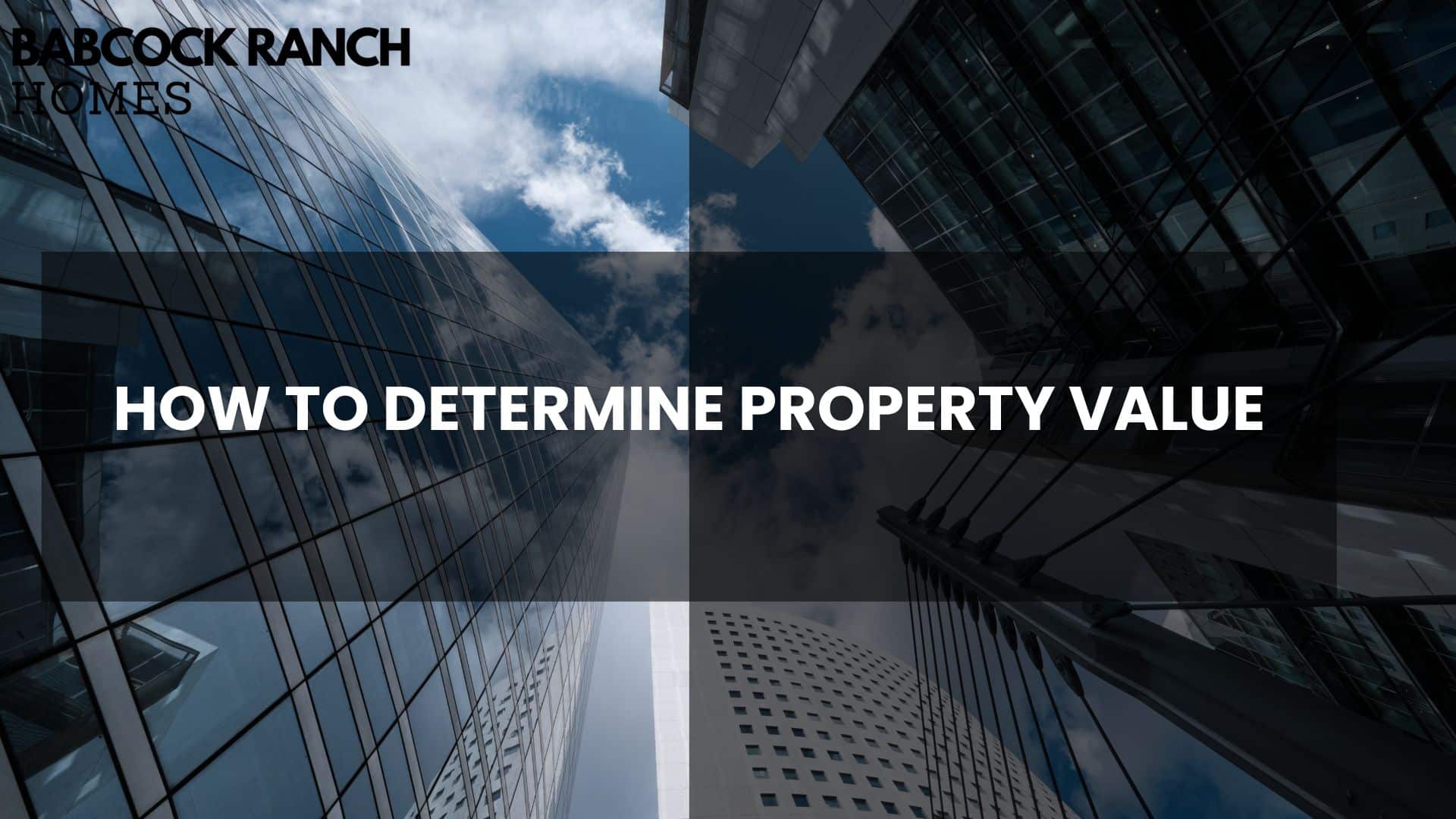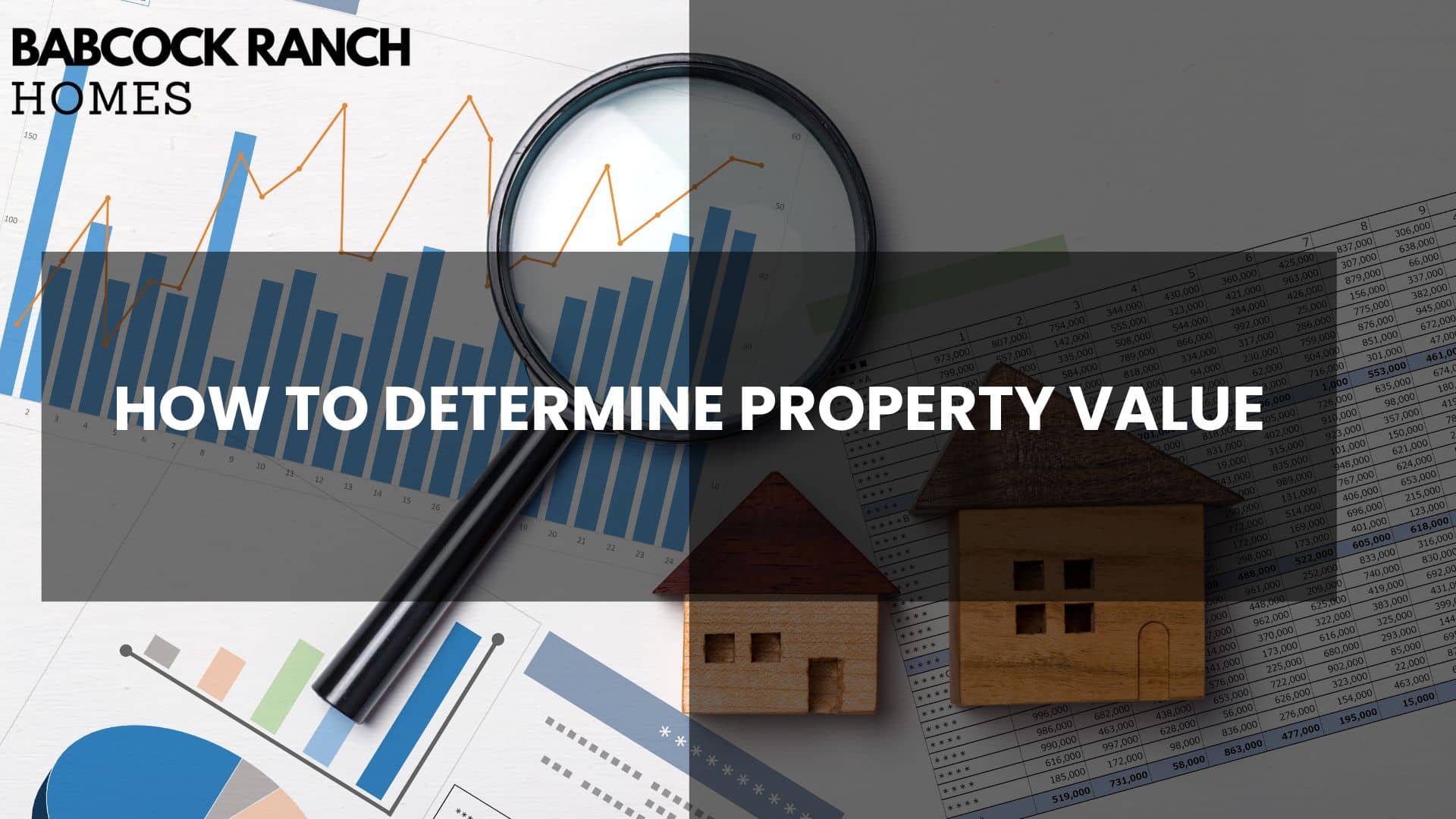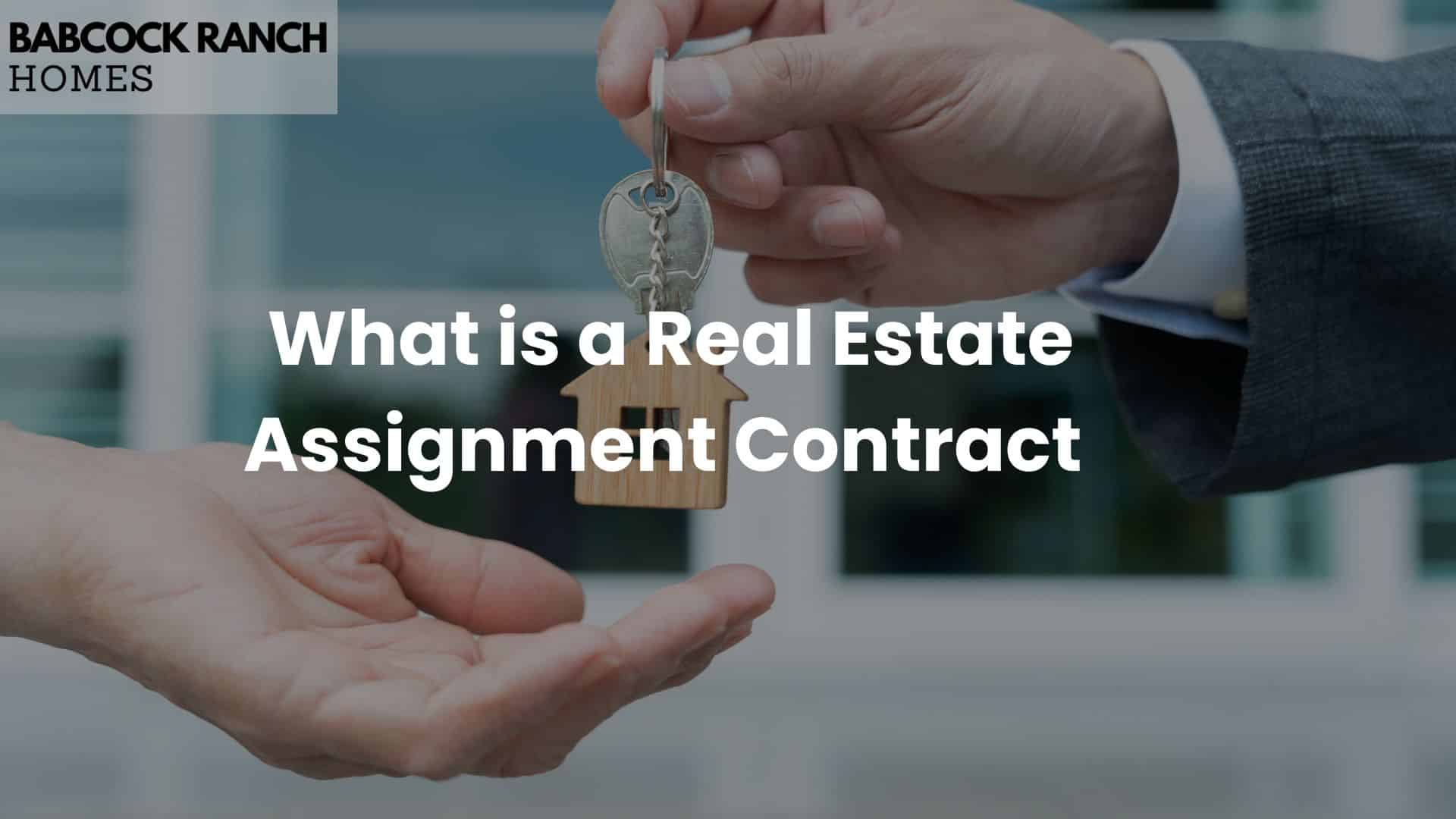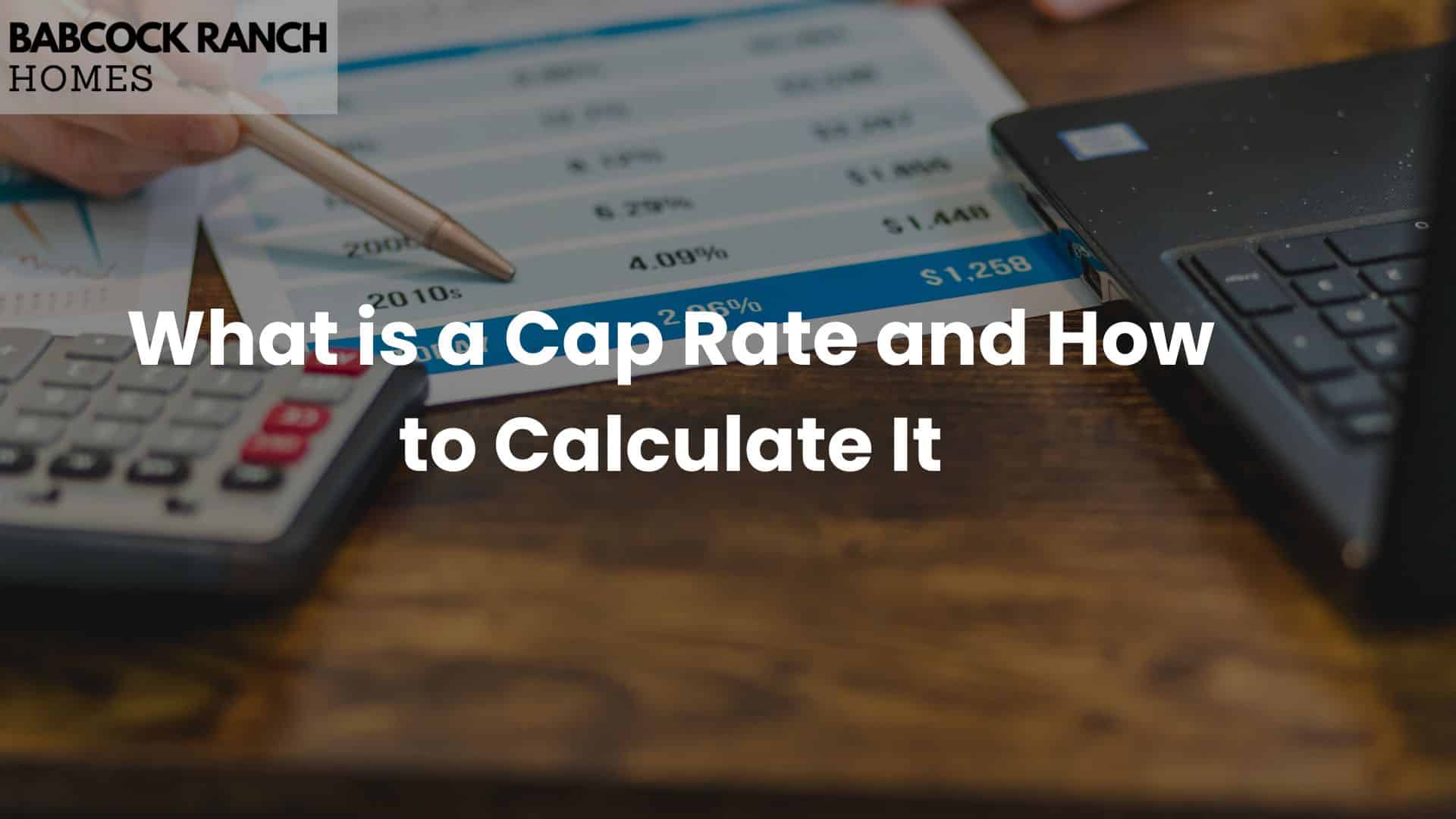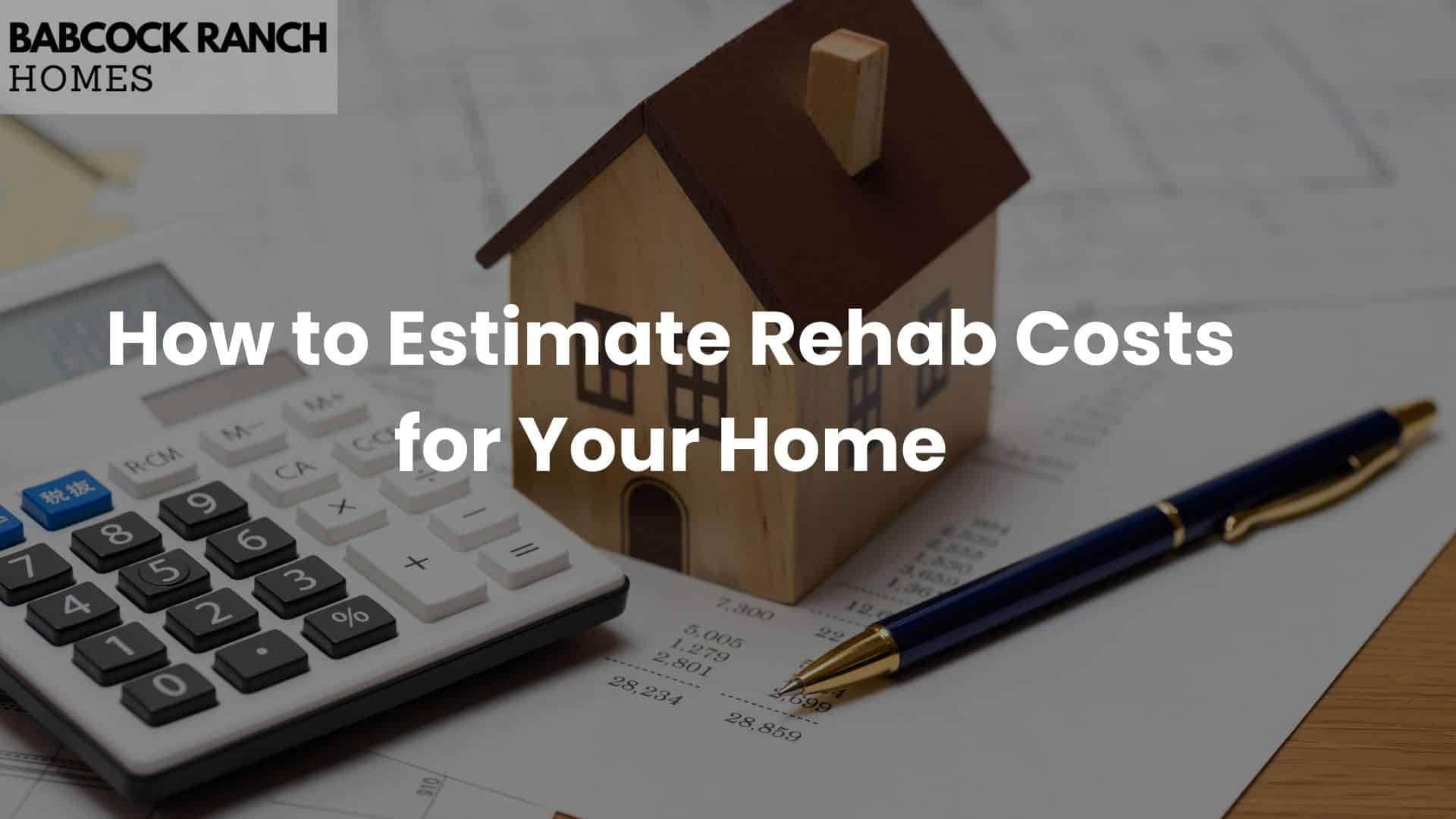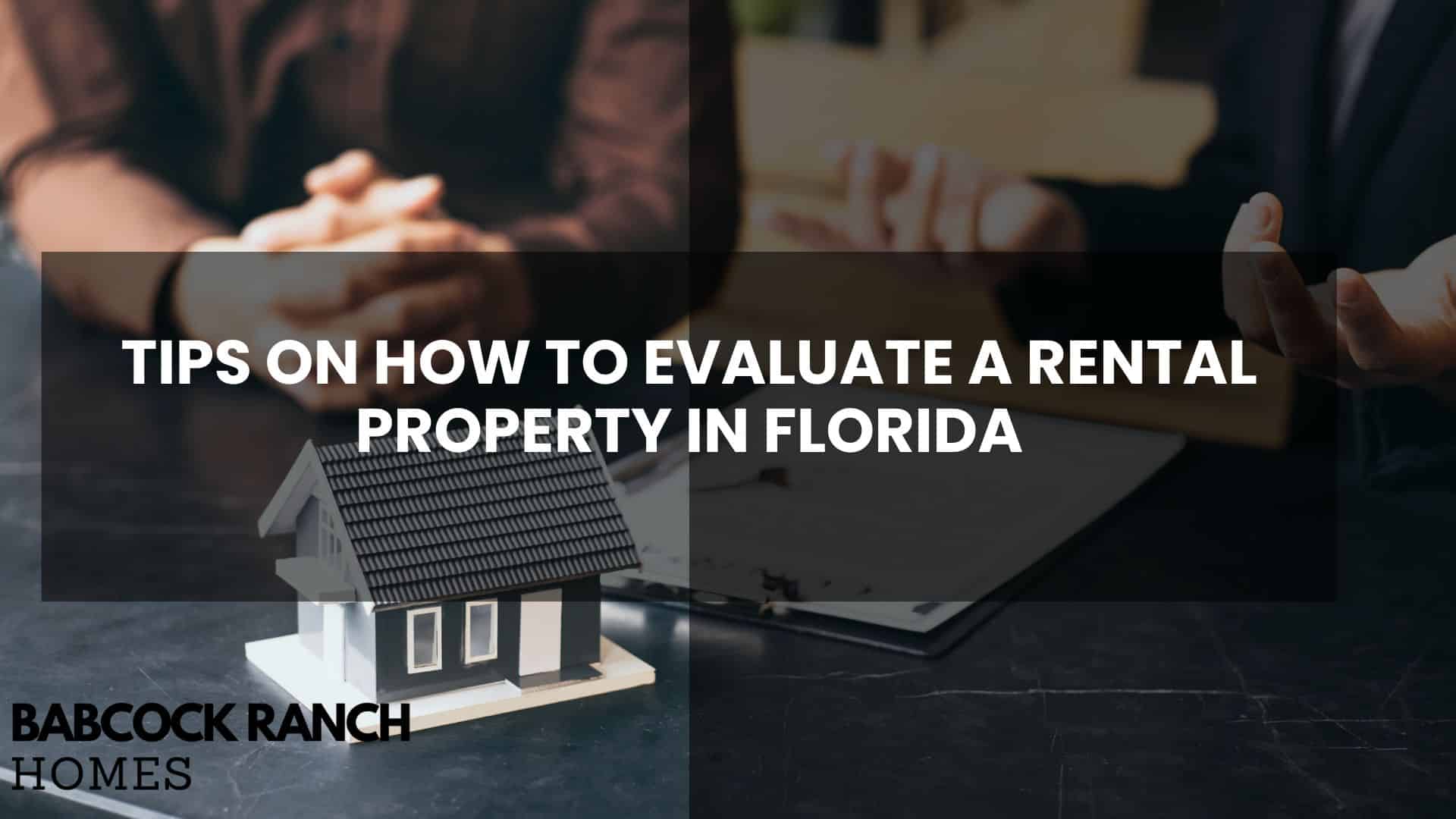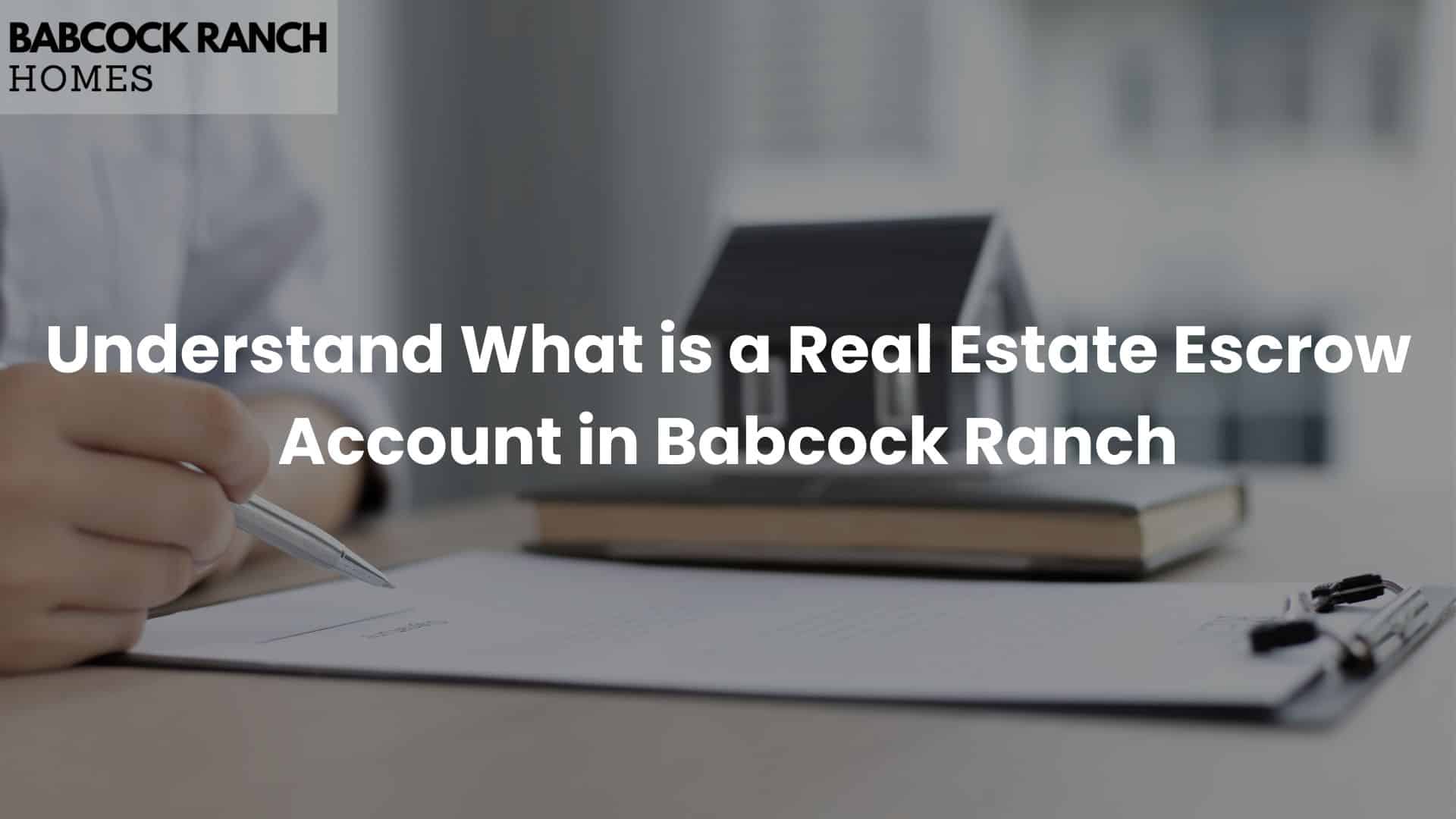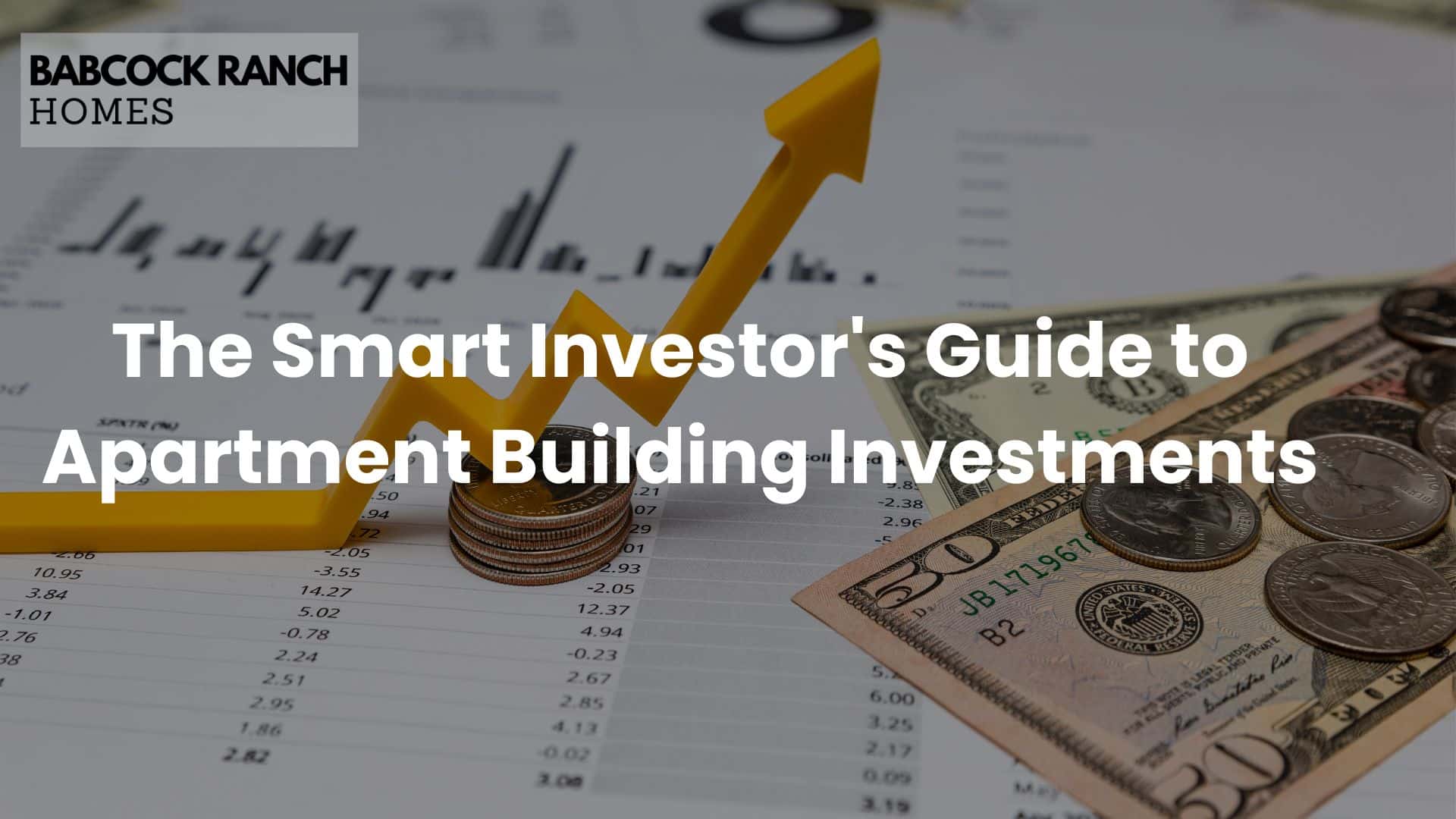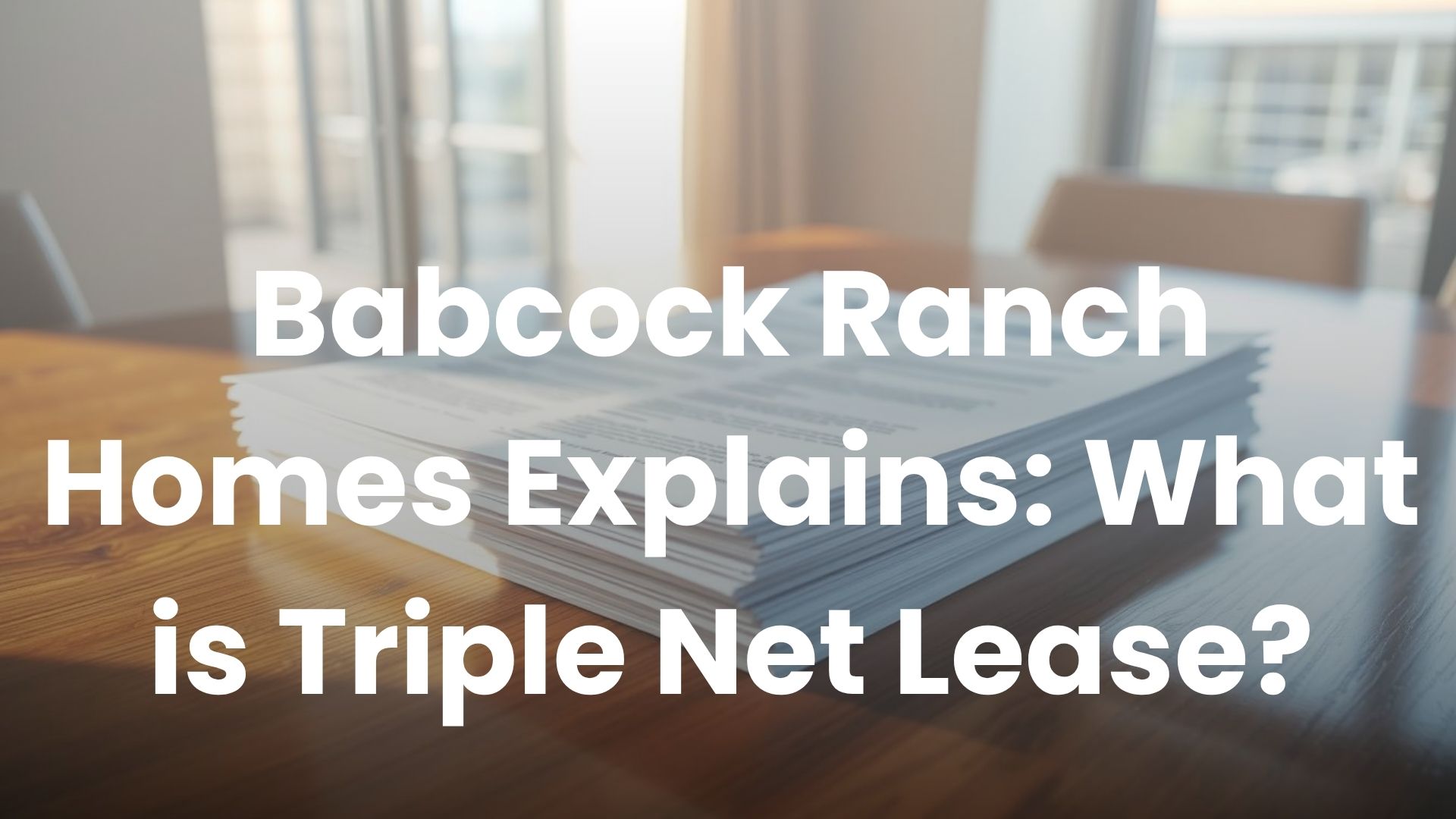
In commercial real estate, lease agreements shape how businesses and investors manage properties. One popular arrangement shifts core expenses like property taxes, insurance, and upkeep to tenants. This model, often abbreviated as NNN, provides unique advantages for both landlords and renters.
Babcock Ranch Homes, a trusted advisor in Southwest Florida’s dynamic market, breaks down this structure for buyers and investors. Unlike traditional agreements where owners handle costs, tenants here pay base rent plus three major operating expenses. This approach streamlines management while offering predictable cash flow.
Common in retail and industrial spaces, these leases appeal to businesses seeking long-term stability. Landlords benefit from reduced financial risk, while tenants gain control over maintenance decisions. Our team at 518-569-7173 often guides clients through comparing NNN options with gross or modified gross leases.
This article explores how these contracts work, their pros and cons, and why they dominate sectors like pharmacies and franchises. We’ll reference insights from Investopedia and industry reports to highlight trends shaping Babcock Ranch’s commercial landscape.
Key Takeaways
- Tenants cover property taxes, insurance, and maintenance costs in addition to base rent.
- Popular in retail and industrial sectors for predictable long-term expenses.
- Reduces landlord responsibilities for day-to-day property management.
- Offers potential tax benefits for businesses through deductible operating costs.
- Requires careful evaluation of local tax rates and insurance premiums.
- Often features longer lease terms compared to standard agreements.
Introduction to Triple Net Leases in Commercial Real Estate
Commercial property agreements often reshape financial responsibilities between owners and occupants. Babcock Ranch Homes helps Southwest Florida investors navigate these arrangements, particularly structures where renters assume key operational costs. This approach creates distinct advantages for both parties in fast-growing markets.
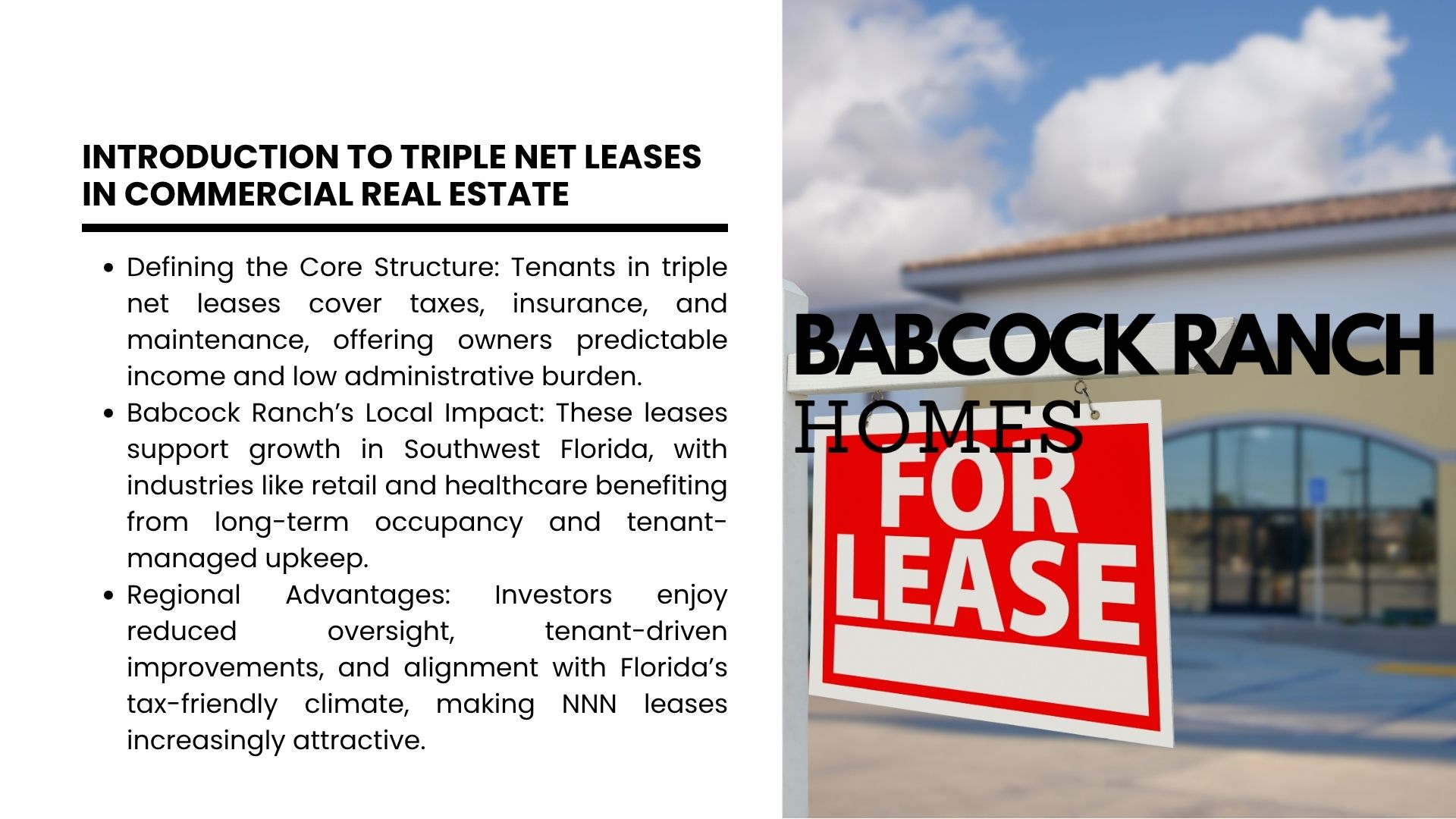
Defining the Core Structure
Under these agreements, occupants pay base rental fees plus three critical property expenses:
| Expense Type | Typical Coverage | Tenant Share |
|---|---|---|
| Taxes | Local property assessments | 100% |
| Insurance | Building coverage premiums | 100% |
| Maintenance | Repairs & common areas | 100% |
This model contrasts sharply with gross leases, where owners handle all costs through higher rent. National Retail Federation data shows 63% of retail chains prefer this setup for long-term budget predictability.
Babcock Ranch’s Local Impact
In Southwest Florida’s thriving economy, these arrangements fuel growth for pharmacies, banks, and service centers. A recent project near Lake Okeechobee saw a medical tenant secure 10-year occupancy while managing plaza upkeep.
“Investors increasingly seek properties with creditworthy occupants in stable NNN agreements.”
Babcock Ranch Homes’ advisors note three regional advantages:
- Reduced owner oversight for out-of-state investors
- Tenant-driven property improvements boosting curb appeal
- Alignment with Florida’s tax-friendly business climate
Understanding what is triple net lease
Financial responsibilities in commercial agreements vary dramatically based on lease type. NNN arrangements restructure expense management through clear operational frameworks. These contracts create predictable financial landscapes for both occupants and investors.
Basic Components and Terminology
Three core elements define these agreements:
- Base rent: Fixed monthly payment excluding operational costs
- Recoverable expenses: Property taxes, insurance premiums, and upkeep
- Absolute net clause: Tenant assumes all structural repair risks
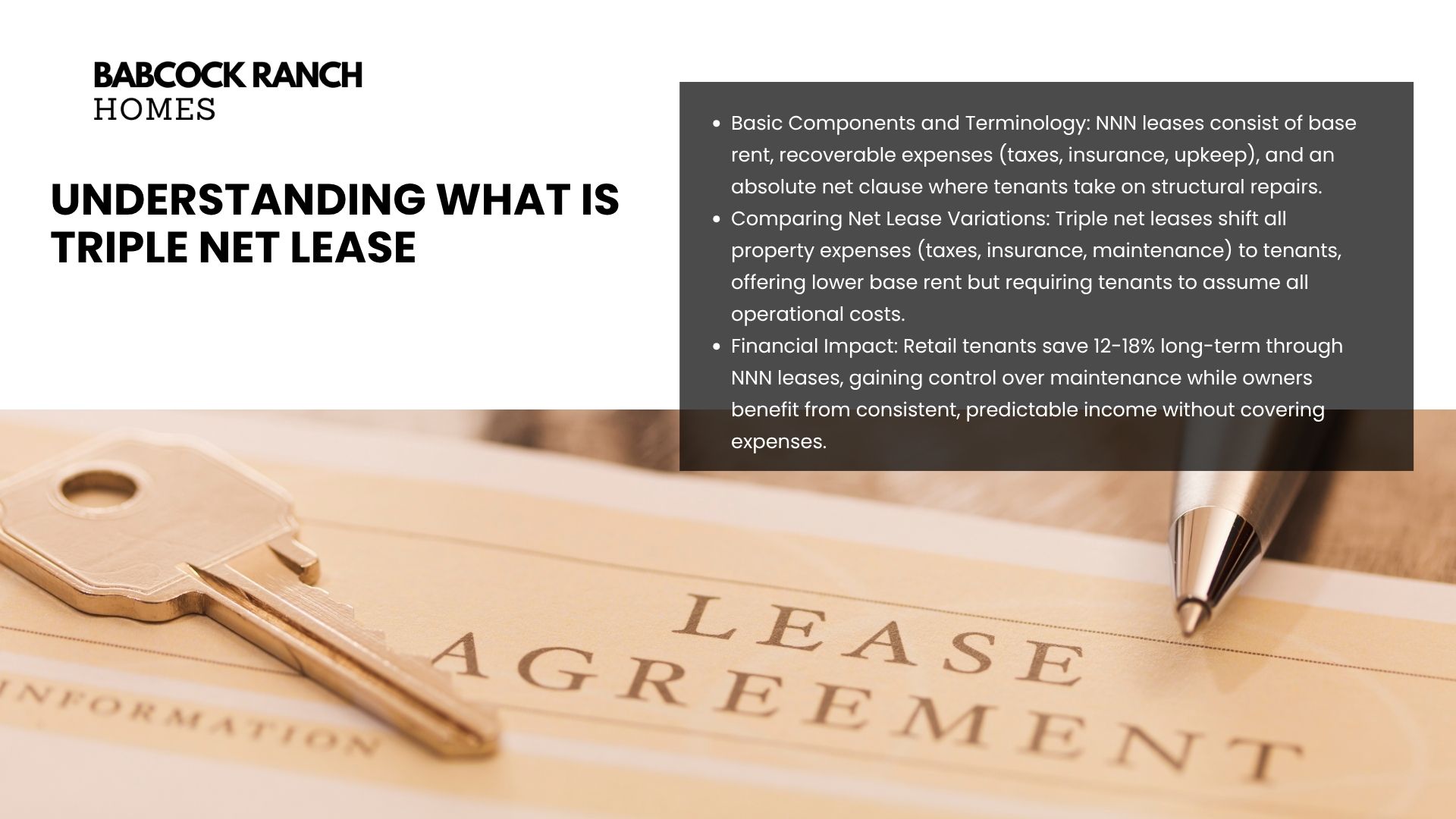
Unlike gross leases with bundled costs, base rates in NNN deals often appear lower. Tenants then pay variable expenses directly. A 2022 ICSC report showed retail tenants save 12-18% long-term through this model despite upfront costs.
Comparing Net Lease Variations
| Lease Type | Tenant Pays | Owner Covers |
|---|---|---|
| Single Net | Taxes + Rent | Insurance, Repairs |
| Double Net | Taxes, Insurance + Rent | Structural Repairs |
| Triple Net | All 3 Nets + Rent | None |
Fast-food franchises often choose full NNN contracts to control site maintenance. As one industry analyst notes: “Tenants gain customization rights, while owners secure hassle-free income.” Negotiations frequently involve trade-offs – lower base rent for accepting roof replacement liabilities.
Key Components and Variations of Net Leases
Lease structures determine financial obligations through precise expense allocation models. Three pillars drive these agreements: property taxes, insurance coverage, and maintenance protocols. Let’s examine how each component operates in practice.
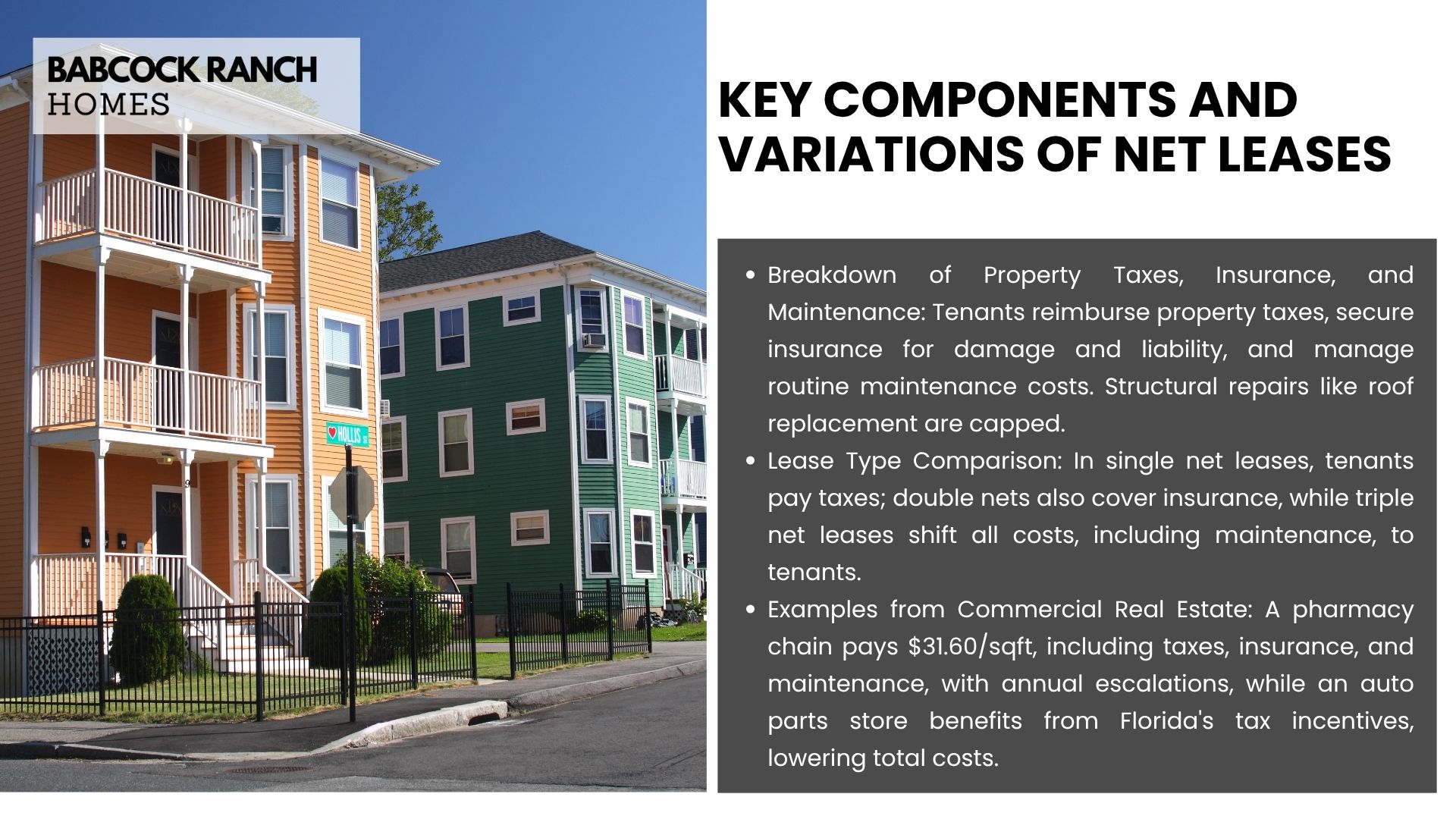
Breakdown of Property Taxes, Insurance, and Maintenance
Property taxes form the first pillar. Tenants reimburse municipalities directly through triple net agreements. A 2023 CBRE study showed retail occupants pay 38-42% of total occupancy costs through tax pass-throughs.
Insurance requirements vary by building type. Tenants typically cover:
- Property damage policies ($1.25-$2.50 per sqft annually)
- Liability coverage for common areas
- Specialized flood insurance in coastal regions
Maintenance obligations split between routine and structural repairs. While tenants handle landscaping and HVAC servicing, leases often cap roof replacement costs at $5-$7 per sqft.
| Lease Type | Tenant Maintenance Share | Common Examples |
|---|---|---|
| Single Net | 0% | Office buildings |
| Double Net | 50-70% | Medical centers |
| Triple Net | 100% | Convenience stores |
Examples from Commercial Real Estate
A national pharmacy chain’s 15-year agreement shows typical cost splits: $18/sqft base rent plus $7.20 for taxes, $1.80 for insurance, and $4.60 for maintenance. Their total $31.60/sqft cost remains fixed through annual 2% escalations.
“Proper expense forecasting prevents 73% of landlord-tenant disputes in NNN agreements.”
In Southwest Florida, a recently signed auto parts store lease demonstrates regional variations. The occupant pays $12.50/sqft base rent while managing $4.10/sqft in recoverable costs – 22% below national averages due to Florida’s tax incentives.
Advantages and Risks for Landlords and Tenants
Balancing opportunities and obligations forms the core of commercial property agreements. These arrangements create shared value while requiring careful navigation of financial responsibilities.
Benefits for Tenants and Landlords
Occupants gain direct control over maintenance schedules and vendor selection. A national auto parts retailer reduced upkeep costs by 19% through in-house service contracts. Landowners enjoy predictable cash flow – one Fort Myers investor reported 98% occupancy stability across 12 NNN properties.
Key advantages include:
- Tenant-driven property upgrades enhancing resale value
- Landlord exemption from roof repairs and landscaping costs
- Fixed base rents with expense pass-throughs
Potential Challenges and Risk Management
A Tampa pharmacy chain faced 34% tax hike surprises before negotiating caps. Strategies like credit checks and escrow accounts mitigate risks:
| Risk Factor | Prevention Tactics |
|---|---|
| Cost spikes | 5-year tax increase ceilings |
| Tenant defaults | Corporate guarantees |
| Deferred maintenance | Third-party inspection clauses |
“Structuring clear expense parameters upfront reduces disputes by 67% in our portfolio.”
Southwest Florida investors increasingly combine NNN agreements with tenant improvement allowances. This hybrid approach maintains financial predictability while encouraging property enhancements.
Triple Net Lease in Commercial Real Estate Investments
Investors seeking stable returns often turn to properties with predictable cash flow structures. These arrangements combine passive income potential with reduced management burdens, particularly appealing for portfolio diversification.
Investment Strategies and Long-Term Income
Properties with creditworthy occupants and 10-15 year terms frequently deliver 5-7% cap rates. A 2023 Nareit study revealed NNN assets outperformed traditional rentals by 22% in cash flow consistency during market fluctuations.
“Portfolios with 25%+ NNN exposure showed 40% lower volatility than REIT averages last decade.”
Key portfolio strategies include:
- Targeting essential service providers like pharmacies
- Prioritizing locations with below-average tax growth rates
- Securing annual rent escalations tied to CPI indexes
| Asset Type | Avg Cap Rate | Lease Duration |
|---|---|---|
| Retail Pharmacy | 5.8% | 15 years |
| Auto Service Center | 6.3% | 10 years |
| Bank Branch | 5.2% | 20 years |
Utilizing 1031 Exchanges in NNN Investments
Section 1031 allows reinvesting sale proceeds into like-kind properties while deferring capital gains taxes. Investors frequently transition from active management to NNN assets through this strategy.
Recent example: A Sarasota investor sold $2M in multifamily units and acquired three NNN-leased medical offices within 180 days. This move maintained $140k annual income while postponing $280k tax liability.
Critical exchange requirements:
- Identify replacement properties within 45 days
- Complete acquisition within 180 days
- Maintain equal or greater debt levels
Managing Operational Costs and Maintenance Responsibilities
Effective cost management strategies separate thriving commercial properties from underperforming assets. Structured approaches balance financial predictability with property preservation, creating win-win scenarios for all parties involved.
Expense Allocation Models and Cost Caps
Modern agreements use three primary methods to distribute financial burdens:
| Model | Key Feature | Benefit |
|---|---|---|
| Fixed Caps | Annual expense ceilings | Prevents budget surprises |
| CPI Adjustments | Costs tied to inflation | Maintains purchasing power |
| Preventive Agreements | Scheduled maintenance plans | Reduces emergency repairs |
A 2023 BOMA study found properties with preventive contracts had 29% lower repair costs than reactive approaches. Tenants in multi-tenant buildings often share common area expenses proportionally, while single-occupant spaces typically bear full responsibility.
Ensuring Property Upkeep and Repair Standards
Clear maintenance protocols protect asset value across lease terms. Industry benchmarks recommend:
- Quarterly HVAC inspections
- Annual roof condition reports
- 5-year parking lot resealing
“Properties with defined upkeep standards retain 18% more value over decade-long leases.”
Southwest Florida investors increasingly use third-party auditors to verify compliance. This practice reduced tenant disputes by 41% in recent Babcock Ranch projects while maintaining property appeal for future occupants.
Exploring the Benefits of Triple Net Leases in Real Estate
Strategic commercial agreements create lasting value when structured effectively. Through NNN arrangements, occupants manage core costs like taxes, insurance, and upkeep while owners secure predictable returns. This model balances risk and reward – businesses control maintenance quality, while investors minimize operational headaches.
Successful partnerships thrive through clear expense caps and preventive maintenance plans. Portfolio strategies leveraging 1031 exchanges demonstrate how investors transition seamlessly between asset types while deferring tax obligations. Properties with creditworthy tenants often deliver stable cash flow, particularly in essential service sectors.
Babcock Ranch Homes helps clients navigate these agreements with local expertise. Our team identifies properties aligning with Florida’s tax advantages and growth trends. Whether evaluating cost ceilings or negotiating inspection clauses, tailored guidance ensures informed decisions.
Ready to explore commercial opportunities in Southwest Florida? Call 518-569-7173 for insights specific to Babcock Ranch’s dynamic market. Let’s transform complex lease structures into strategic advantages for your portfolio.


